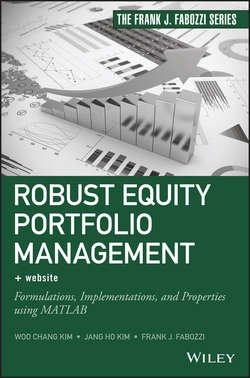Читать книгу Robust Equity Portfolio Management - Fabozzi Frank J. - Страница 5
На сайте Литреса книга снята с продажи.
Preface
ОглавлениеThe mean-variance model for constructing portfolios, introduced by Harry Markowitz, changed how portfolio managers analyze portfolios, especially for managing equity portfolios. The model provides a strong foundation for quantifying the return and risk attributes of a portfolio, as well as mathematically forming optimal portfolios. Following the 1952 publication of Markowitz's mean-variance model, there have been numerous extensions of the original model, particularly starting in the 1990s, that have sought to overcome criticisms of the original model. In this book, we focus on one of these extensions, the construction of robust portfolios for equity portfolio management within the mean-variance framework. We refer to this approach as robust equity portfolio management.
The book will be most helpful for readers who are interested in learning about the quantitative side of equity portfolio management, mainly portfolio optimization and risk analysis. Mean-variance portfolio optimization is covered in detail, leading to an extensive discussion on robust portfolio optimization. Nonetheless, readers without prior knowledge of portfolio management or mathematical modeling should be able to follow the presentation, as basic concepts are covered in each chapter. Furthermore, the main quantitative approaches are presented with MATLAB examples, allowing readers to easily implement portfolio problems in MATLAB or similar modeling software. An online appendix provides the MATLAB codes presented in the chapter boxes (www.wiley.com/go/robustequitypm).
Although this is not the only book on robust portfolio management, it distinguishes itself from other books by focusing solely on quantitative robust equity portfolio management, including step-by-step implementations. Other books, such as Robust Portfolio Optimization and Management by Frank J. Fabozzi, Petter N. Kolm, Dessislava Pachamanova, and Sergio M. Focardi, also introduce robust approaches, but we believe that readers seeking to learn the formulations, implementations, and properties of robust equity portfolios will benefit considerably by studying the chapters in the current book.
Woo Chang Kim
Jang Ho Kim
Frank J. Fabozzi
